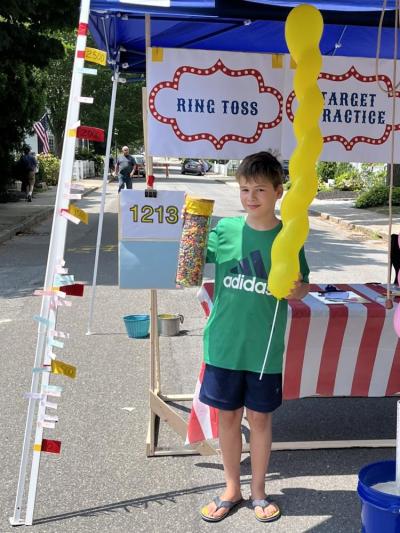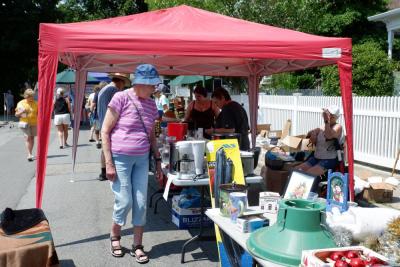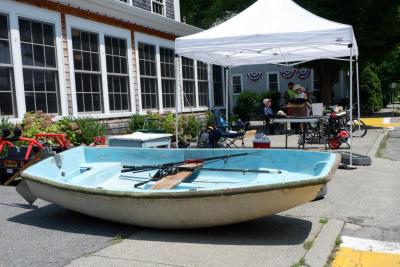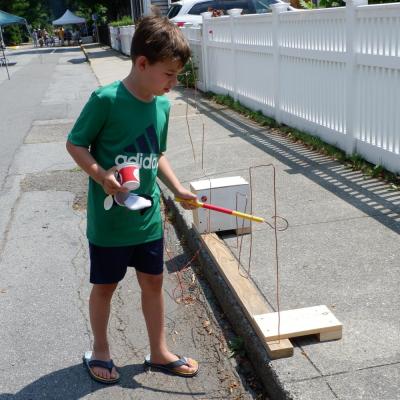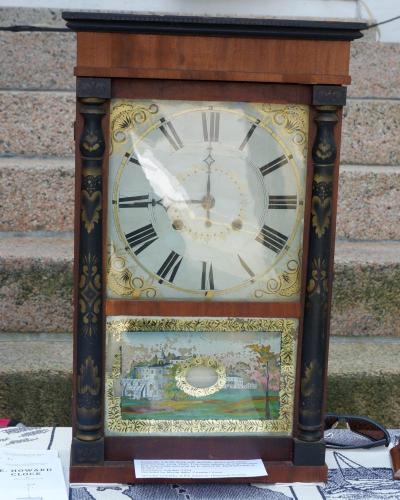1,200 Fruit Loops and more fill street for fair
MARION — A cylinder of Fruit Loops sat on a shaded table in the middle of Main Street during the First Congregational Church of Marion’s summer fair.
It was a game to guess how many of the brightly colored circles of cereal were inside the container. Estimates ranged from an audaciously precise 2,482 to a conservative 10.
There were 1,213 Fruit Loops, it turned out. Sampson deBeer earned victory with a guess of 1,050.
He said when submitting his estimate that he could see many at the fair had already guessed 1,000 or 1,500.
“So I did something in between,” deBeer said.
A little further down the street, it smelled of burgers and hot dogs — a cookout in front of the church building that also included make-your-own lobster roll kits.
The summer fair has been going for 30 years, according to Judith Coykendall, a church volunteer stationed at a white elephant sale table just past the fair’s section kid games and attractions.
“The kids have a lot to do,” Coykendall said.
The front yard of the church featured a bake sale, and the white elephant sale stretched the street from Penny Pinchers Exchange to the corner of the Marion General Store, where another volunteer, Peter Winters, purveyed used sports and nautical equipment.
That included two boats, one of which had already been purchased by noon, according to Winters.
Coinciding with the First Congregational Church of Marion’s summer fair was a kick off to a fundraiser seeking $107,000 to restore the timepiece of the church’s clock tower.
A weight-driven, pendulum regulated mechanical system created around 1860 kept the time of the clocks and bell, according to Jeff Oakes, member of the church’s personnel, property and finance committee.
But in 1954, the pendulum and weights were removed, replaced with an electric system. The church is looking to restore the timepiece to the original weights and pendulum mechanics.
Oakes said there’s a “preservation aspect” to the restoration project, and the timepiece with its original system would entail less maintenance and operate during electrical outages.
“It is a community treasure,” Oakes said.



